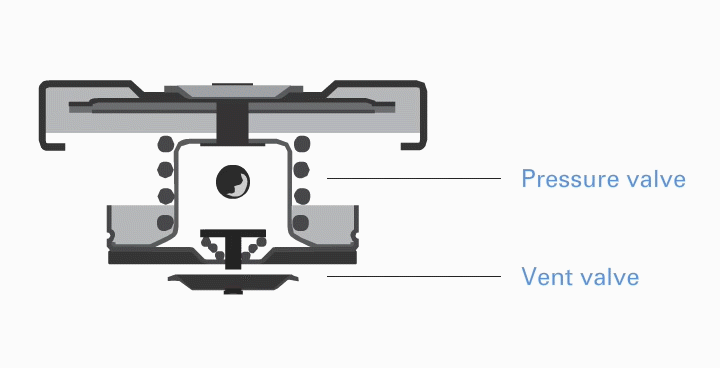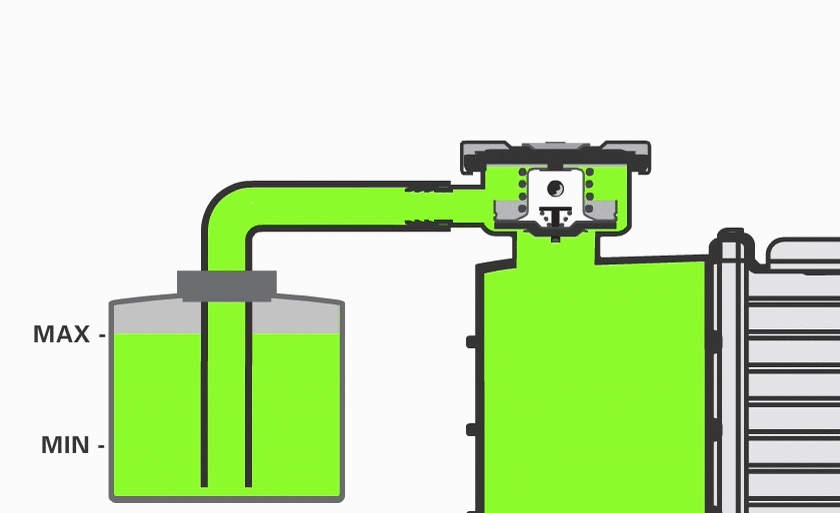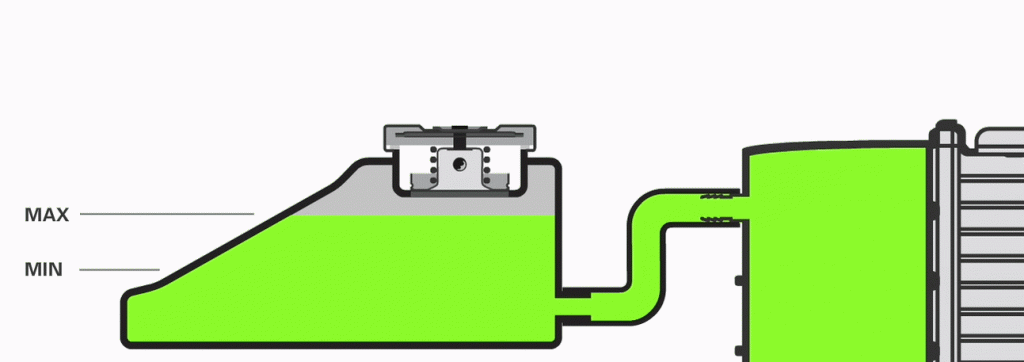2.5 - System Pressurization
When the cooling liquid boils, it evaporates and causes air pockets in the system. The vapour in the engine will not absorb heat and cause hot spots around the engine where damage will occur. System pressurization is necessary to achieve higher liquid boiling point so the cooling system is protected from fluid evaporation. To control and maintain pressure in the cooling system a pressure cap is used.

Pressure Cap
The pressure cap can be mounted on the radiator or the recovery tank.
The cooling system needs to increase boiling point of the liquid to prevent damage to the engine.
The cap must maintain a specific pressure in the system that can vary between five and twenty Psi.

Coolant Reservoir
The coolant reservoir or expansion tank is a plastic container that enables the radiator to stock liquid when hot (caused by the expansion) and return the coolant to the radiator when the engine cools down.
This ensures that the system is always full of liquid and at the same time see through the clear plastic if the system is full.
Two models of recovery tank are used on vehicles:

Radiator Mounted Cap
On the radiator, the cap has two main functions: first, it controls the system pressure with a calibrated spring that will keep the system under specific pressure (5 to 20 psi). This pressure is used to increase the boiling point of the coolant to prevent vapour build-up around the liquid passages in the engine which can cause severe damage.
Second, a vent valve controls flow of coolant from the recovery tank to the radiator.

Recovery Mounted Cap
On models using a recovery tank pressure cap, the radiator is sealed and does not have a cap.
The direct circulation to the coolant reservoir makes it easier to prevent air from accumulating in the system. The principle of operation is the same as a radiator mounted pressure cap. The pressure cap can be removed only when the engine as cooled down.
- The coolant reservoir provides a location to fill the system.
- Contains coolant expansion and system pressurization.
- Provides air separation during operation.
- Replenishes the engine coolant to the system.

Water Pump
The water pump circulates the liquid in the passages to absorb the heat from the engine. The pump does not create pressure in the system. The pressure is created by the heat and the expansion in the system. The pump may be driven by a belt, timing belt or engine gear.
The water pump needs clean antifreeze to lubricate the seals and prevent impeller damage and wear.

Thermostat
The thermostat is a valve that controls the opening and closing of the circuit to the radiator. To maintain proper engine operating temperature the liquid must stay in the engine a specific amount of time to absorb the heat. When the temperature reaches the predetermined range, the thermostat will open and let the liquid circulate to the radiator to release the heat. All engines have a specific temperature range. Do not change the heat range. If the engine has cooling system concerns, they have to be addressed by proper repair. Do not lower or increase temperature range of the thermostat. Find the source of the problem or the performance of the engine will be affected.

Heater
The heater or heater core is located in the passenger compartment. It carries the heat necessary to warm the passenger compartment. It is used in conjunction with the temperature control system. It is made of copper/brass or aluminum.
Exposed to the same internal environment as radiator, it should be inspected at the same frequency as the radiator.
